Why do cats' eyes glow in the dark?
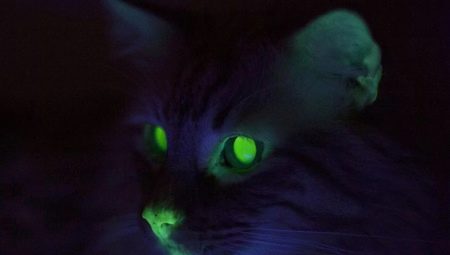
Cats are amazing and unique animals. It is not for nothing that there was a special attitude towards them in different cultures. Some considered them sacred animals, others attributed them to the servants of the dark forces and were afraid. One of the reasons is the uniqueness of their vision. Everyone knows that in the dark, their eyes sparkle with bright lights. Let's see if there is even a grain of mysticism in this.
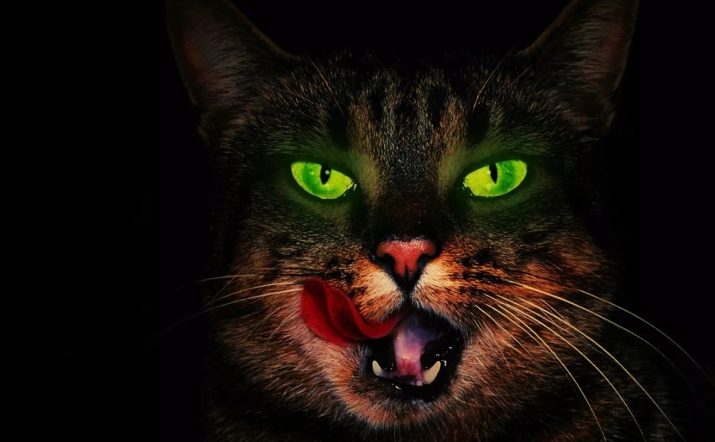
How does a cat's eye work?
If you compare the human and cat's eyes, then you can find a number of differences. It is they who determine the peculiarities of their vision. We do not want to confuse you with abstruse biological terms, so we will try to tell you about how the cat's eye works, simply and clearly.
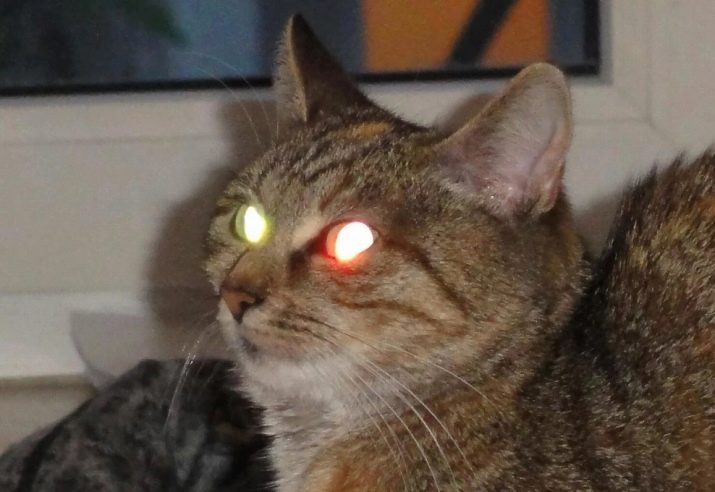
The figure shows a schematic structure of a cat's eye. Each element serves a specific purpose. Their functions and characteristics determine the peculiarity of feline vision.
- Sclera. The outer shell that maintains the correct shape of the eye.
- Cornea (stratum corneum). Performs protective functions. It has a convex shape and protects the delicate iris and pupil from external damage.
- Vascular layer. Without it, the functioning and nourishment of the eyes would be impossible. Yes, they also need nutrients and oxygen.
- Lens... Many people think of this organ as a cut diamond. But in reality it is a liquid substance. However, its functions are very similar to a real diamond. It also refracts and transforms the incoming stream of light.
- Retina... Due to the presence of photoreceptors, this organ is responsible for the perception of the entire light flux that has passed through the cornea and lens. The first and very important feature of a cat's vision lies precisely in this.The fact is that both in us and in our smaller brothers, photoreceptors are represented by cones and rods. Their ratio determines the acuity and receptivity of the eyes. So, in cats, the overwhelming majority are precisely rods (there are 25 times more of them than cones).
- Tapetum... This is a special reflective layer that nature has endowed felines with. Thanks to him, they have such keen eyesight and see well in the dark. Everything is simple here. In humans, only the retina catches the streams of light, but not all of them fall on it. In a cat, even those rays that have passed by the retina will be captured and reflected by this layer. This means that the brain will receive more information from the optic nerves.
- The optic nerve. The information received by the retina and reflected from the tapetum is converted into electrical impulses that go directly to the brain and are processed there.
We did not begin to list absolutely all the organs that make up the cat's eyes. The fact is that these main parts are directly related to our topic. Already on the basis of this information, it becomes clear that the vision of cats is unique, although in many respects it is similar to ours.
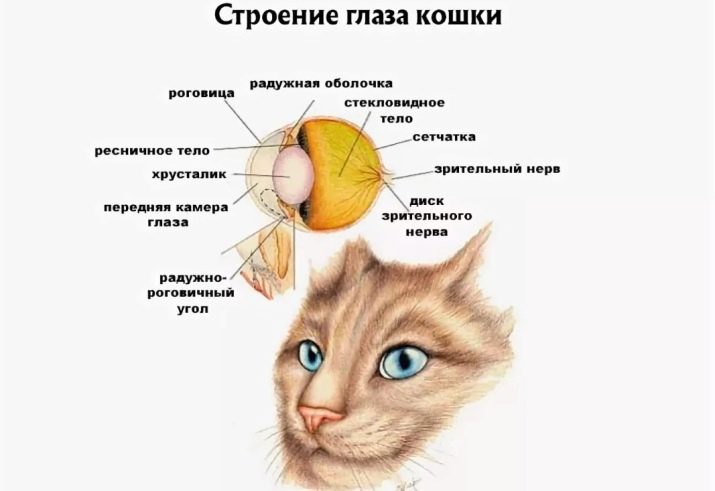
Features of vision
So, we examined the components of a cat's eye. Now it remains to draw conclusions and learn about the features.
- Even with the naked eye it can be seen that the organs of vision of our pets are set quite deeply. Therefore, it is more difficult for them to see objects located on the periphery. The same feature explains the limited mobility of the eye itself.
- The pupil is vertical. Its size depends entirely on the lighting. The stronger it is, the narrower it is. In daylight, it completely turns into a narrow crack. The fact is that this amount of light rays (which pass through it) will be enough to give complete information to the brain about the environment.
- Direct exposure to sunlight is detrimental to the eyes. It's all about their increased sensitivity. On average, it is 7 times human.
- Each eye has its own visual field. That is, the area around from which he reads information (receives a stream of light). The left and right eye fields overlap. This explains the fact that cats see 3D images.
- Our pets have color vision, although it is different from ours. They perfectly distinguish the shades of the upper spectrum (cyan, blue, green). But they see all shades of red in gray. The same applies to colors such as orange and yellow.
- If it is easier for us to see any object in statics, then in born hunters the emphasis is shifted to moving objects. This feature becomes critical in the wild. That is why the cat will notice even the slightest movement or movement in the apartment.
- The cat has no blind spots. Drivers are familiar with this concept. But some herbivores also have places that they simply cannot see. They are located directly in front of the animal's muzzle. This is unacceptable for hunters.
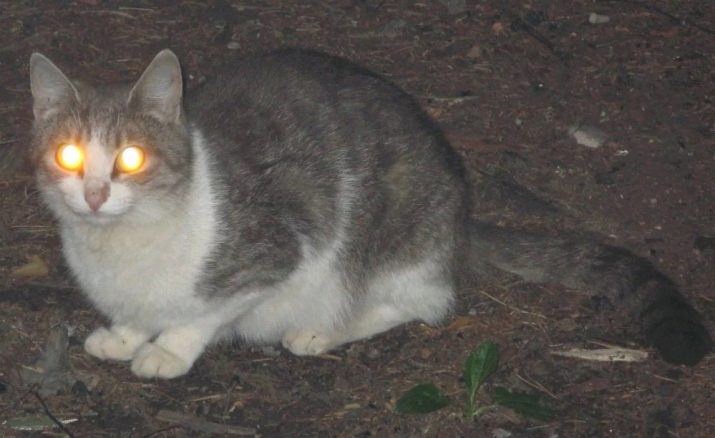
The reasons for the glow
At night, leaving the room and accidentally bumping into your pet, you can see how his eyes are burning with bright lights. But contrary to this common expression, their eyes do not shine. But how can this be?
The point is that a special layer, the tapetum, which we talked about earlier, is a mirror-like surface. Even the slightest stream of light that hits it is reflected. And it is this reflected light that we see.
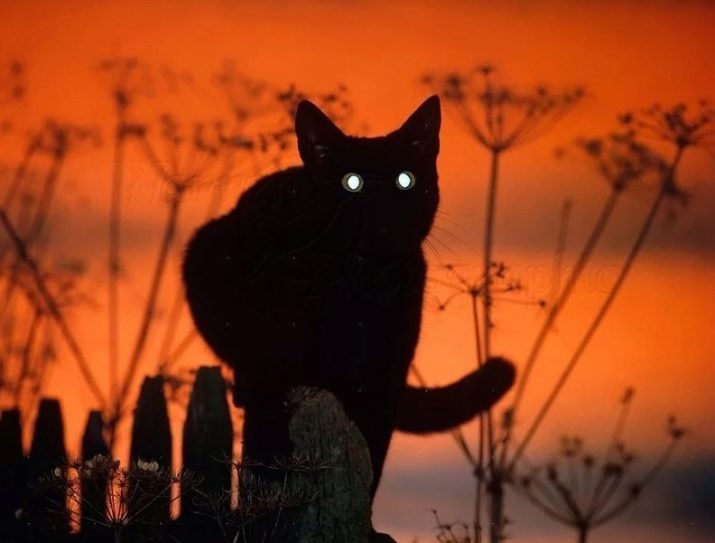
Contrary to popular belief, even a cat with its unique vision cannot see in pitch darkness. In order for the brain to receive information, at least a weak source of light is needed. Many will argue that they saw how the eyes of these animals flare up in the dark. The fact is that those weak light sources that are in this darkness are not perceived by the human eye. It seems to us that the room is completely dark, but this amount is enough for a cat family.
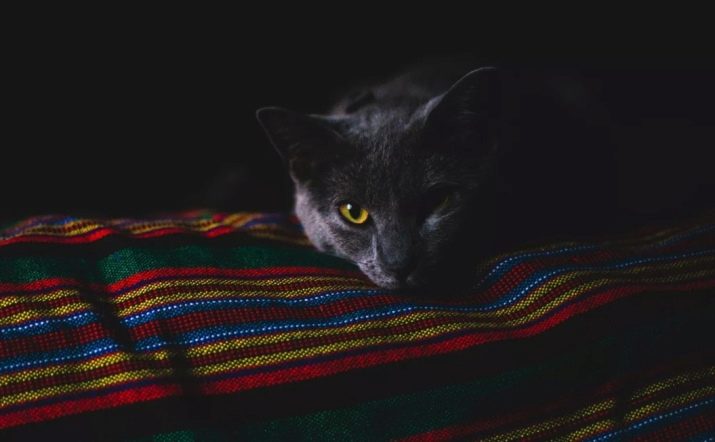
Why does the color differ?
Many may have noticed that in different breeds of cats, the retina of the eye has a different color. This is indeed the case. But this is not at all the main reason for the different glow.
It's all about the mirror layer on the back of the eye again. With the same structure, this organ can have a different chemical composition and pigmentation. Due to this, shades from yellow to purple are obtained. Most often, we see exactly green and yellow reflections.

The different colors are also explained by the structure of this layer. In some, it covers the entire back wall, while others have pigmented areas. And also the colors are refracted due to the interlayer, it is she who gives the green glow.
If you think that only our pets have such a unique feature, you are mistaken. Take a look at your photos. Is there an effect called red-eye on them? This is also nothing more than the reflection of light rays. And the red light is explained by the presence of vascular connections, which color the flow in this shade.
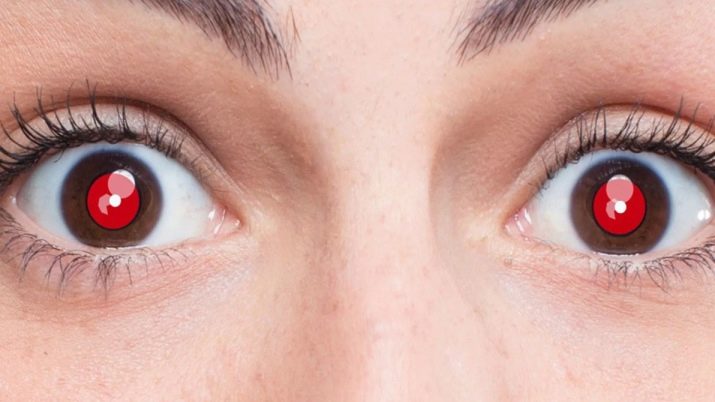
How to explain to children?
Of course, it is much easier for adults to explain this or that scientific fact. But when a small child comes up to you and asks why the cat's eyes are glowing, difficulties may arise. You will not tell the little fidget about the complex structure and refraction of light. It will not be clear to him.
However, I don't want to mislead the baby and say that this is a magical power that all cats are endowed with. After all, most of our beliefs are formed precisely in childhood. What will be his surprise when, in physics and biology lessons, he will be told about these features.
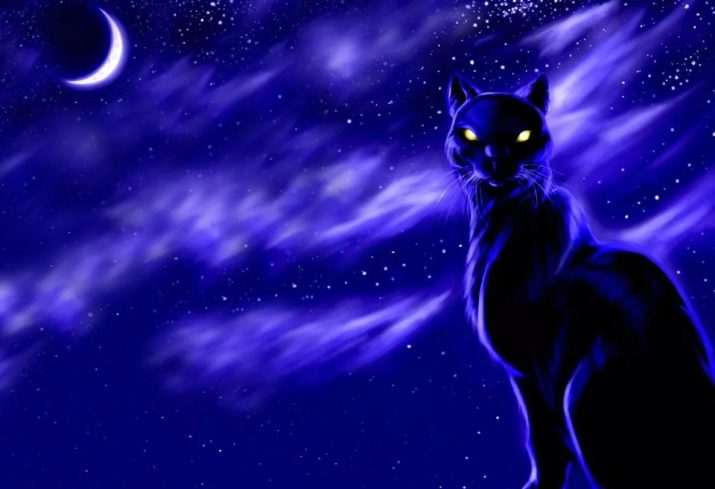
Here you can choose for yourself two ways. The first is to tell the child a legend, which is not devoid of meaning and scientific justification. And it literally reads the following. In ancient times, cats did not have such keen eyesight. But since they only hunted at night, they just needed to see in the dark. Then the good-natured goddess took pity and gave them the ability to collect even small rays of light. They gathered in the eyes of the cat and illuminated her path.
Despite the fabulous subtext, this legend has a right to exist. Indeed, by and large, everything happens that way.
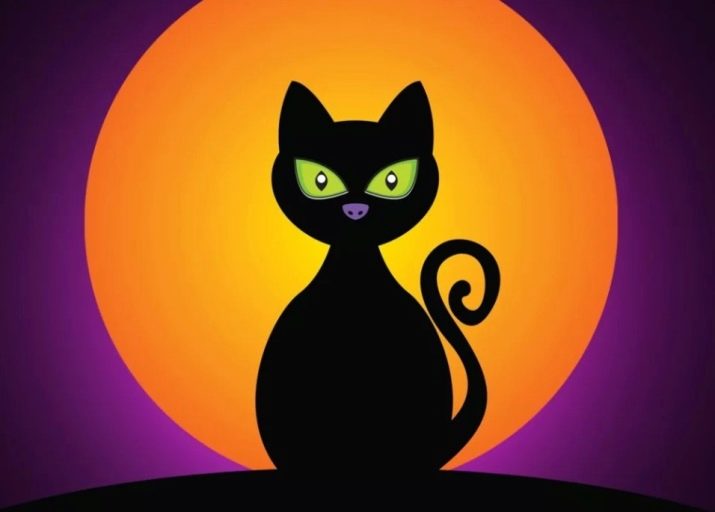
You can try to explain to the kid the glow of the cat's eyes in a more prosaic way.... Take a small flashlight, go to the mirror and point it at the mirror. Let your toddler see the light reflect and become visible. Further, we can say that your beloved kitty has small mirrors hidden in her eyes, which also reflect light. Only she does not need to shine a flashlight in her eyes for this, even a weak moonlight will be enough.
It is worth noting that in Russia it was believed that dark forces peep behind people through their eyes. Therefore, it was not recommended to look the cat in the eye.
In Europe, during the period of the Great Inquisition, these animals fell into even greater disfavor. They were considered servants of Satan and were mercilessly exterminated. The end of this story was sad, as the extermination led to an increased number of rats and mice and an epidemic of the Bubonic Plague.
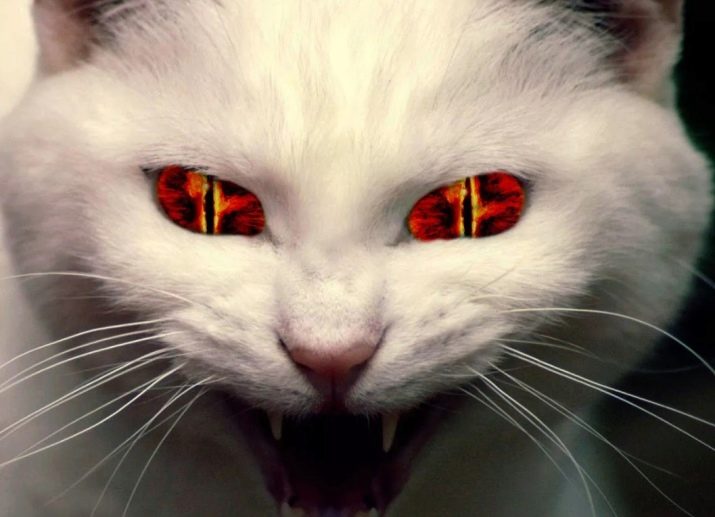
For a visual explanation of the reasons for the glowing eyes in cats, see below.
































